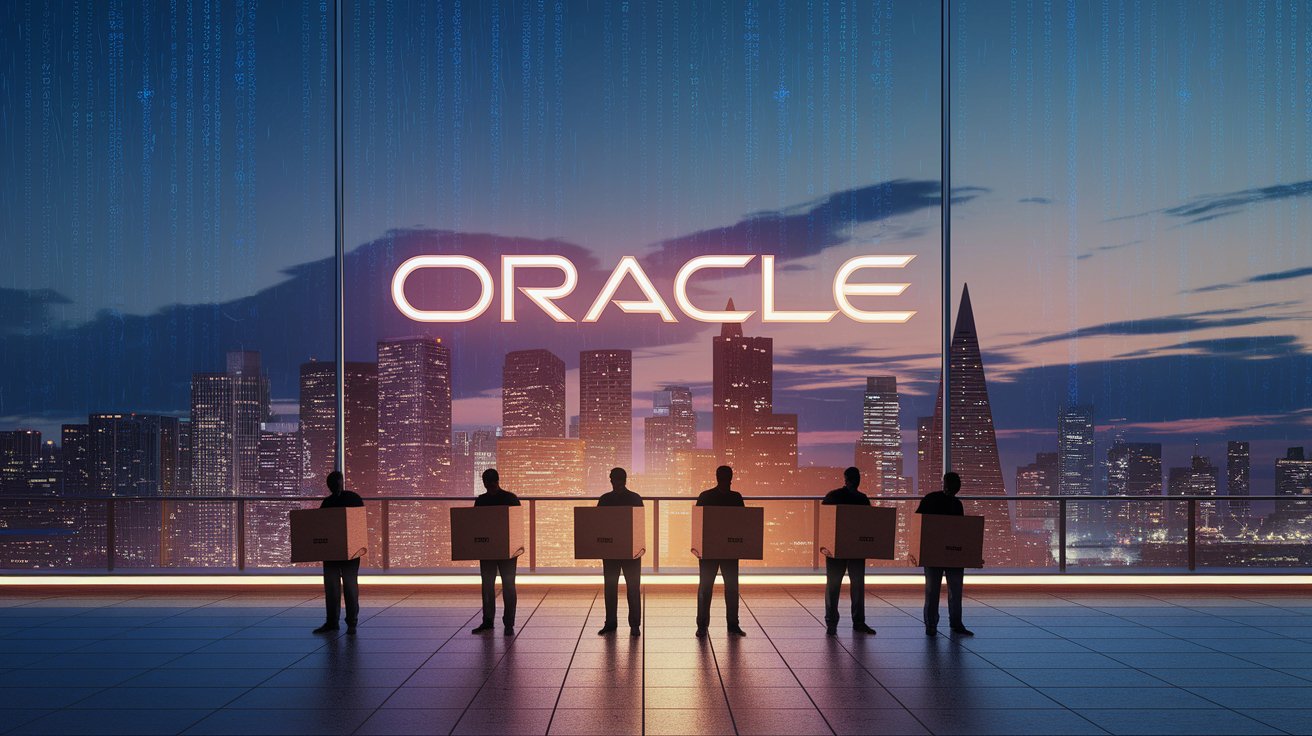Introduction
In the fast-paced world of Big Tech, where innovation races ahead at breakneck speed, it’s jarring when giants like Oracle start slashing jobs left and right. Picture this: a company raking in over $57 billion in annual revenue, sealing massive deals with AI powerhouses like OpenAI, and yet, quietly showing the door to hundreds, if not thousands, of employees across the globe. As we hit September 2025, Oracle’s ongoing layoffs have sparked heated debates, leaving workers reeling and industry watchers scratching their heads. Is this just corporate belt-tightening, or a sign of deeper shifts in the tech landscape? Let’s dive into the details of these cuts, exploring the who, what, where, and why, all while unpacking the human stories behind the headlines.
The Scale of the Cuts: A Global Wave of Redundancies

Oracle’s layoff spree kicked off in August 2025 and shows no signs of slowing down as we enter September. What started as targeted reductions in the company’s cloud infrastructure teams has ballooned into a widespread purge affecting multiple divisions and regions. In the U.S. alone, the Bay Area, Oracle’s Silicon Valley stronghold, has been hit hard. According to state filings under the Worker Adjustment and Retraining Notification (WARN) Act, at least 254 employees were let go in a single round: 187 from Redwood City, 36 from Pleasanton, and 31 from Santa Clara. That’s on top of earlier cuts in August, which saw 188 jobs vanish from those same California hubs.
But it’s not just California feeling the pinch. Up in Seattle, Oracle filed notices for 101 layoffs, adding to 161 from the previous month, totaling over 260 in that city alone. Social media buzz and anonymous forums like Reddit and TheLayoff.com paint an even broader picture; employees in states like Kansas, Massachusetts, Texas, and Missouri report being caught in the crossfire. Roles on the chopping block? Everything from cloud operations managers and software engineers to data scientists, architects, and even high-performers in AI and machine learning teams.
Globally, the impact is staggering. India, a key hub for Oracle’s operations, has borne the brunt, with reports of heavy reductions in engineering and support roles. Canada and Mexico haven’t been spared either, while the Philippines saw entire teams in Oracle Advanced Customer Services (ACS) and NetSuite wiped out after ominous “Business Update” meetings. Europe might be next; whispers of unscheduled management huddles suggest more announcements could drop soon. One estimate from industry insiders pegs the total at around 9,000 jobs worldwide, though Oracle hasn’t confirmed the full tally. What’s clear is that no corner of the company is immune, from Oracle Cloud Infrastructure (OCI) and its Enterprise Engineering division to Oracle Health (the rebranded Cerner, acquired for $28.3 billion in 2022) and even AI/ML units fueling the company’s future bets.
Profits Soaring, Jobs Plummeting: The Irony at Oracle’s Core

Here’s where it gets baffling. These layoffs come hot on the heels of Oracle’s stellar financial performance. For fiscal year 2025, the company reported $57.4 billion in revenue, an 8% jump year-over-year. The fourth quarter alone brought in $15.9 billion, up 11%, with net income hitting $3.4 billion. Oracle’s stock has climbed 45% in the last six months, buoyed by high-profile partnerships like the $30 billion Stargate project with OpenAI. Larry Ellison’s cloud empire is thriving, positioning itself as a linchpin in the AI boom.
So why the cuts? Insiders and analysts point to a classic tech tale: efficiency drives amid rising costs and rapid tech evolution. Oracle, like many peers, is reallocating resources to “high-growth areas” such as AI infrastructure. But anonymous posts on platforms like TeamBlind and TheLayoff.com reveal a more cynical view. One laid-off employee vented, “It’s just about money, and more money.” Others speculate that favoritism and cost-cutting trump performance, high-earners and veterans (some nearing 25-year milestones) are out, while lower-paid staff hang on. Age discrimination murmurs are floating around, too, with potential lawsuits on the horizon.
This isn’t happening in a vacuum. The tech sector’s “shaky” state, as one burnt-out Oracle alum put it, is fueling anxiety. With AI automating jobs and operational expenses ballooning, companies are trimming fat even as profits roll in. Oracle’s moves echo recent layoffs at Cisco (hundreds despite an 8% revenue spike), Microsoft (300 in Washington), and Salesforce (262 in San Francisco, with CEO Marc Benioff blaming AI). It’s a reminder that in tech, success doesn’t always trickle down to the workforce.
The Human Toll: Stories from the Front Lines

Beyond the numbers, these layoffs are upending lives. On TeamBlind, a former Oracle employee shared a raw post: “I’m not looking for a referral… I’m so sick and tired of tech and very burnt out. I think I’m going to be taking time off for an indefinite amount of time.” They pondered ditching IT altogether for something less volatile, echoing a sentiment shared by many. Responses flooded in, some empathetic (“Right there with you, so tired of grinding so they can buy another yacht”), others practical (“Brush up your resume… don’t let this bump stop you”).
On TheLayoff.com, tales range from shock (“I never saw this coming”) to resignation (“Good riddance—I’d stopped caring”). One user estimated 3,340 affected based on Slack channel drops, highlighting the abruptness. For many, especially in Oracle Health, the cuts feel like a betrayal after the Cerner integration promised stability. In the Philippines and India, where tech jobs are lifelines, the ripple effects on families and local economies could be profound.
It’s a stark contrast to Oracle’s 160,000-strong global workforce, where innovation in cloud and AI should spell opportunity. Yet, as one poster quipped, the options boil down to “become a mushroom grower hippie or a crypto dude with a Lambo.” Humor aside, these stories underscore the burnout epidemic in tech, where relentless pace meets job insecurity.
Recommended Readings

For deeper insights into the Oracle layoffs, tech industry shifts, and strategies for navigating career transitions, check out these impactful books:
- “The Phoenix Project: A Novel About IT, DevOps, and Helping Your Business Win” by Gene Kim, Kevin Behr, and George Spafford – This engaging novel explores the challenges of IT transformations, offering lessons on resilience and adaptability that resonate with Oracle’s workforce navigating change.
- “Reboot: Leadership and the Art of Growing Up” by Jerry Colonna – A reflective guide for tech professionals facing burnout, offering wisdom on rediscovering purpose after career disruptions like layoffs.
- “The Lean Startup: How Today’s Entrepreneurs Use Continuous Innovation to Create Radically Successful Businesses” by Eric Ries – A must-read for tech workers considering entrepreneurial paths or side hustles post-layoff, with insights on pivoting in a volatile industry.
- “Work Won’t Love You Back: How Devotion to Our Jobs Keeps Us Exploited, Exhausted, and Alone” by Sarah Jaffe – This book dives into the emotional toll of tech’s grind, echoing the burnout sentiments of Oracle’s laid-off workers and offering a broader critique of workplace loyalty.
These books provide practical and emotional guidance for those affected by the Oracle layoffs or curious about tech’s evolving landscape. Stay informed, stay resilient, and keep exploring new paths in this ever-changing industry.
FAQ: Answering Your Burning Questions on Oracle Layoffs

Q 1: How many employees has Oracle laid off in 2025?
A: Official figures are piecemeal, but reports suggest around 9,000 globally, with confirmed U.S. cuts exceeding 500 in recent rounds. The total could climb as reductions continue.
Q 2: Which divisions are most affected?
A: Oracle Cloud Infrastructure (OCI), Oracle Health, AI/ML teams, engineering, and support roles like ACS and NetSuite have seen the heaviest impacts.
Q 3: Why is Oracle laying off staff despite strong profits?
A: It’s about reallocating to growth areas like AI, cutting costs, and boosting efficiency. Similar to moves at Cisco and Microsoft, it’s not about financial distress but strategic pivots.
Q 4: Are there signs of more layoffs coming?
A: Yes—Europe and other regions report pending “business updates,” and the cuts have spanned months without an official end in sight.
Q 5: What should affected employees do next?
A: Take time to decompress, update resumes, network beyond tech, and explore unemployment benefits or severance. Forums like TeamBlind offer community support.
Q 6: Is this part of a larger tech industry trend?
A: Absolutely. With AI automation and economic pressures, layoffs at Salesforce, Cisco, and others signal a “shaky” sector prioritizing profits over headcount.
Broader Implications: A Wake-Up Call for Tech Workers?

Oracle’s layoffs spotlight a troubling trend: even profitable tech behemoths aren’t immune to workforce volatility. As AI reshapes roles, companies are prioritizing agility over loyalty. For employees, it’s a cue to diversify skills, perhaps eyeing trades or side hustles, as forum advice suggests. For Oracle, the cuts might streamline operations, but at what cost to morale and innovation?
In conclusion, Oracle’s 2025 layoffs aren’t just corporate housekeeping; they’re a microcosm of tech’s turbulent evolution. While the company chases AI dominance and record revenues, thousands navigate uncertainty. It’s a poignant reminder that behind every earnings call are real people. As the dust settles, one hopes Oracle and the industry find a balance between profits and humanity. For now, workers worldwide are left wondering: who’s next?
Stay tuned, tech’s story is ever-evolving, and so are its challenges.












Leave a Reply